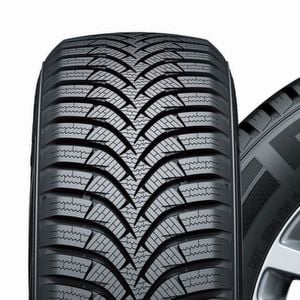Last Updated on 26.09.2024 by hrushetskyy
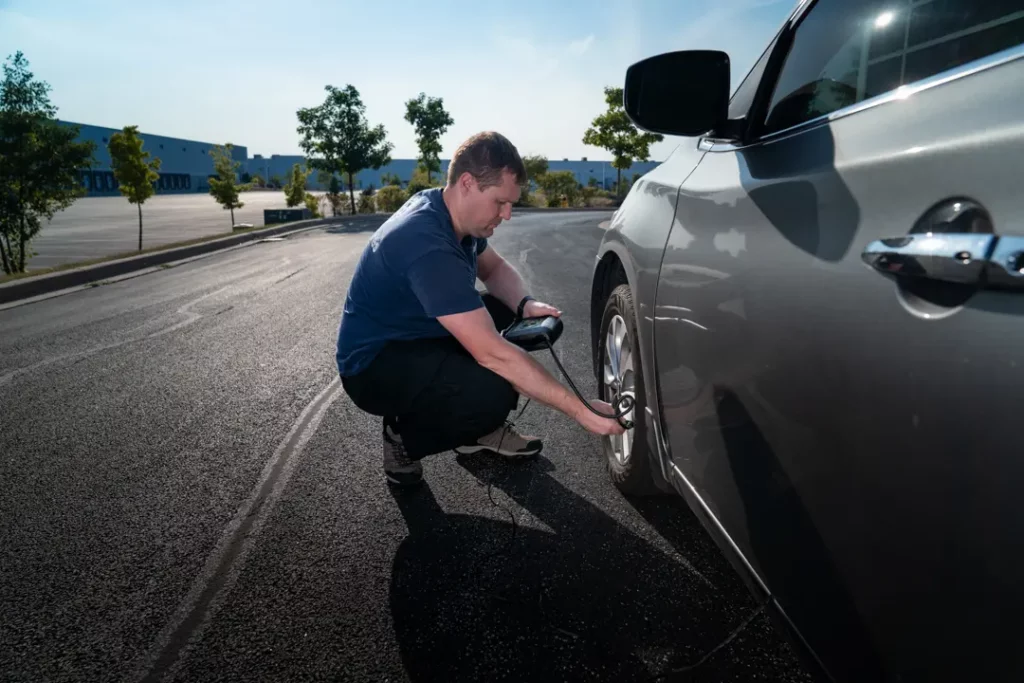
You probably know that having the correct tire pressure is important, but did you know that there are quite a few factors that affect the correct air pressure in your tires? Knowing the correct pressures for various situations is important for keeping you safe, as well as extending the life of your tires. This guide covers everything you need to know about air pressure in your tires, from manufacturer recommendations to seasonal adjustments and the significance of the numbers on your tire’s sidewall.
Manufacturer’s recommendations
Let’s start with the basics. Your vehicle’s manufacturer will always have specific tire pressure recommendations based on your type of car and how it’s likely to be used. You can usually find this information on a placard inside the driver’s door frame or in the vehicle manual. You’ll see the pressure for both the front tires and the rear tires, as these recommended pressures are generally different. This is measured in pounds per square inch (psi).
These car manufacturer recommendations take into consideration factors like load distribution, ride comfort, and handling. For example, passenger cars typically need 30 to 35 psi, but this can vary depending on the vehicle and how it’s being used.
Did you know that when your car is fully loaded, you need higher pressure in your tires? If you look at the manufacturers recommended pressure you will notice two sets of numbers. These refer to your car with a standard load, and your car fully loaded. Increasing the pressure when the car has a full load is important for both safety and performance. If you don’t adjust for the extra weight, you will have too low tire pressure, which can lead to increased heat build-up and potential tire failure.
Factors affecting pressures
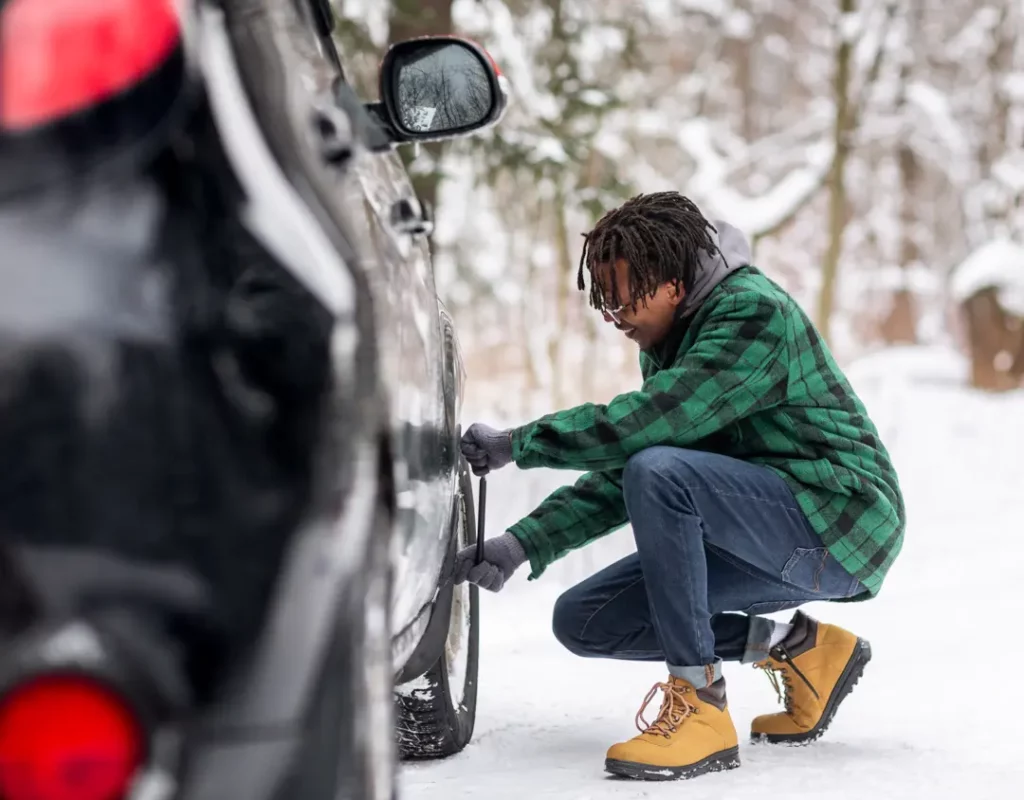
As we’ve seen, how fully loaded your car is can affect the recommended air pressure, but there are other factors you consider when you check tire pressure.
Seasonal variations: summer vs. winter
The weather can play a factor in your tire’s pressures. In the summer, higher temperatures cause the air in your tires to expand, increasing the pressure. At this time of year, it’s important to avoid letting air out of hot tires to match the recommended cold tire pressure, as this can lead to under-inflated tires when they cool down. To account for this, you might set the tire pump to about 10 psi above the recommended cold pressure during hot weather.
The opposite is true in winter. Cold temperatures cause the air in your tires to contract, dropping the pressure. The air pressure in your tires typically drops by about 1 psi for every 10°F drop in temperature. This is why it’s so important to check and adjust your tires more frequently in winter to keep them at the recommended level.
Everyday influences
As you can see, the ambient temperature significantly affects tire pressure. A 10°F shift can alter it by about 1-2 psi. Additionally, tires can lose up to 2 psi per month, even without significant temperature changes. This is why you should check tire pressure regularly, especially when the temperature is changing a lot.
Load ratings
As mentioned above, you should adjust the air in your tires if you plan to carry a heavy load. As well as the recommended pressure for a full load, which you’ll find in your manual, you can also check your tire’s load and speed rating.
Understanding your tire’s load ratings will help ensure you have the right tires for your vehicle’s weight, especially when carrying heavy loads. If you overload your vehicle without the appropriate tire pressure, this can lead to increased wear and potential tire failure.
Maximum pressure for the sidewall
While the car manufacturer has recommendations for tire pressure, you’ll also find the tire manufacturer states the maximum permissible inflation pressure on your tire’s sidewall. However, this is not the number you should inflate your tire to. This number indicates the tire’s maximum capacity, not the recommended operating pressure for your vehicle. The sidewall maximum is usually higher, accounting for the tire’s maximum load capacity.
You should never exceed the maximum sidewall pressure, as it increases the risk of tire failure due to over-inflation. Over-inflated tires are more prone to cuts, punctures, and impact damage. Always stick to the manufacturer’s recommended pressure for everyday driving and only ever use the sidewall maximum as a reference for the tire’s maximum pressure.
Why correct tire pressure matters
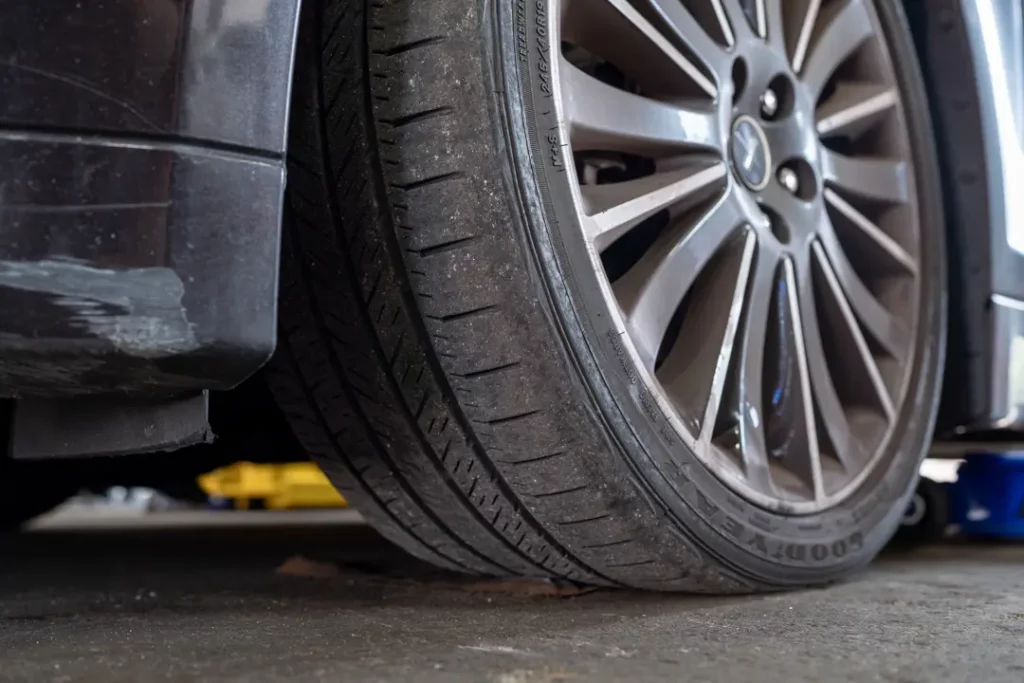
So why is it so important to check the air pressure in your tires regularly?
Fuel efficiency
We all like to save money, and making sure your tires are properly inflated can significantly improve your car’s fuel economy. Under-inflated tires create more rolling resistance, which in turn makes the engine work harder, so it needs to use more fuel. Keeping your tires at the correct pressure helps reduce fuel consumption and saves you money at the pump.
Tire wear
Depending on whether your tires are over or under-inflated, they will wear out differently:
- Under-inflation causes your tires to wear out more quickly on the edges and can lead to poor handling, increased braking distance, and a higher risk of blowouts. It can also negatively impact fuel economy and overall vehicle performance.
- Over-inflation causes tires to wear out more quickly in the center of the tread and can result in a harsher ride. They are also more susceptible to damage from road hazards, such as potholes and debris, which can lead to blowouts and other safety issues.
Monitoring and maintenance
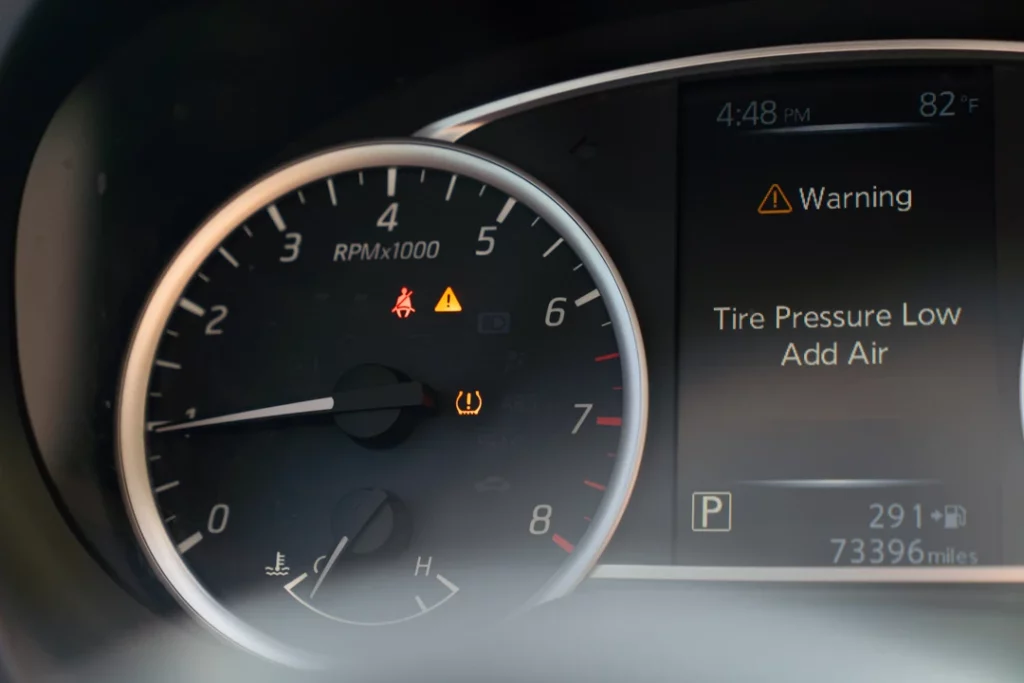
So how do you ensure your tires are all at the recommended psi? Luckily modern cars are well equipped to keep you safe.
Tire Pressure Monitoring Systems (TPMS)
All modern vehicles come equipped with Tire Pressure Monitoring Systems (TPMS). These systems alert you when tire pressure is too low, helping you avoid any accidents. However, they usually only alert you when the psi drops very low, so shouldn’t replace regular tire checks. It’s important to understand how your TPMS works, and when it will alert you of a problem.
Tire pressure gauge
Every motorist should have a tire pressure gauge at home. With this handy tool, you can easily check if your tires need more air. To use one, take the cap off the valve stem and press the gauge firmly into the valve. Check the reading against the recommended psi, and if it’s too low, and add air to your tires.
Regular maintenance tips
Check your tire pressure at least once a month and before you take any long trips. Regular checks help ensure your tires are properly inflated, improving safety, performance, and longevity.
Frequently Asked Questions
Is 40 psi good tire pressure?
No, for most cars a tire pressure of 40 psi is too high. You might find 40 psi suitable for some vehicles, especially if they’re carrying heavier loads or if the manufacturer’s recommendation is close to that figure. However, it’s generally too high for most passenger cars, which usually recommend between 30-35 psi. Always check the car maker’s recommendations for the exact figures. Keeping your tires at the correct pressure ensures better gas mileage, safer handling, and longer tire life.
Is 28 tire pressure good?
No, a tire pressure of 28 psi is generally lower than what’s recommended for most cars, which is typically around 30-35 psi. Running your tires at 28 psi can cause poor handling, increased wear on the tire edges, and reduced fuel efficiency. It’s always best to check your vehicle’s owner’s manual or the placard inside the driver’s door for the manufacturer’s recommended tire pressure to ensure optimal performance, safety, and tire longevity.
Should tire pressure be 32 or 35?
Whether your tire pressure should be 32 or 35 psi depends on your vehicle’s specific recommendations. Most passenger cars typically recommend tire pressures in this range. You can find the exact recommendation in your vehicle’s owner’s manual or on the placard inside the driver’s door frame. Generally, the higher psi is for a car carrying a full load, and the lower number is for a car with a lighter load, but this should be indicated alongside the recommended psi.
What is the proper tire pressure for a car?
The proper tire pressure for a car is usually between about 30 and 35 psi. You can find the exact recommended tire pressure in your vehicle’s owner’s manual or on a placard located inside the driver’s door frame. It’s important to keep your tires at the recommended pressure so you get better handling, improved gas mileage, and longer tire life. It’s important to check your tire pressure regularly, especially with changing weather conditions, to maintain optimal performance and safety.
Share the Knowledge
